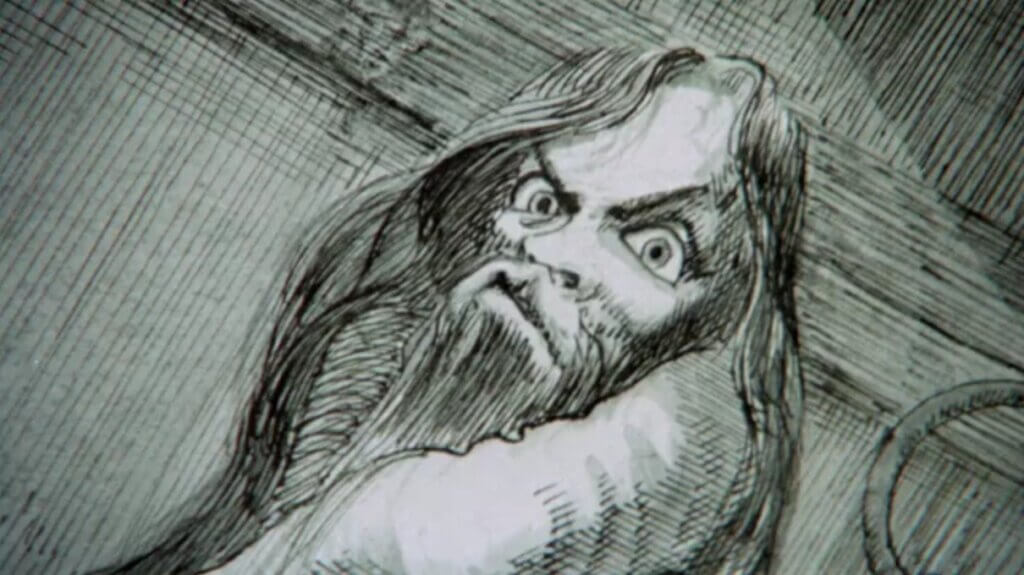Asylum (1972), The “Best” Horror Anthology of All Time
Though it offers up very few real scares, Asylum (1972) might be the greatest horror anthology film of all time.
Despite the popularity of horror anthology movies, there are very few quality ones to choose from. Films like Creepshow (1982) often rank among the best, and while it certainly holds value as a cult classic, it works more as goofy, pulp horror fiction than anything else. Like nearly every horror anthology in the history of the genre, the individual storylines are hit and miss, and the scares are weak at best; Roy Ward Baker’s Asylum (1972) is no exception, though its narrative cohesion makes it one of the best, if not the best horror anthology ever made. Sadly, from my point of view, this isn’t saying very much.
The film (sometimes billed as House of Crazies) tells the story of the young Dr. Martin, who is summoned to a mental asylum out in the country to interview for an open position. The head of the asylum, Lionel Rutheford, takes a strong-armed approach to psychiatry — and for good reason. He recently lost the use of his legs and became wheelchair-bound after being attacked by one of his patients.
Rather than conducting a standard interview, Rutherford decides to test Dr. Martin’s abilities by posing a kind of riddle. The former head of the asylum, Dr. B Starr, has gone insane and, as such, is now one of the patients. If Dr. Martin can correctly identify the real B Starr, he will solve the riddle and get the job. Though Dr. Martin is hesitant to take Rutheford up on the offer, he eventually agrees to go upstairs and evaluate the patients one by one. The asylum’s sole attendant, Max Reynolds, leads Dr. Martin through the high-security door and into each of the patient’s rooms, while simultaneously refusing to divulge any information that could help him solve the riddle.
The film works well because it ties all of the stories together with a fun and intriguing framing device.

Dr. Martin’s exploration of the asylum functions as the framing story for the rest of the film. As he introduces himself to each of the three patients, they explain the strange circumstances that brought them to the asylum in the first place. These stories create the “anthology,” while the game between Rutheford and Dr. Martin helps connect all of the stories into one overarching narrative.
The patient’s experiences are all based on short stories by Robert Bloch, who also adapted the script for the film. The first encounter tells the story of Bonnie, the former mistress of a wealthy man named Walter. The two devised a plan to murder Walter’s wife, Ruth, so that they could finally be together. Unfortunately for Bonnie and Walter, Ruth practiced voodoo, leading to a mildly creepy and violent series of events.
The next patient, Bruno, recalls being a down-on-his-luck tailor who was commissioned to make a very strange suit for a wealthy client. When he discovers that the client plans to use the suit for deranged purposes, he tries unsuccessfully to back out of the deal. However, the suit brings nothing but trouble to Bruno and his wife, Anna.
Finally, the third patient, Dr. Byron, explains that he is working toward the secret to soul transference. He creates miniature likenesses of real people, including himself, which he plans to use to completely reanimate human souls. However, the dolls are no ordinary creations, as he claims that each of them contains actual human organs, blood, and viscera.
Asylum (1972) is more fascinating as a study of cinematic storytelling than a frightening or believable film in its own right.

While all of the stories work well together, none of them are all that scary. In fact, that’s a gross understatement. Asylum (1972) is one of the least frightening horror films I’ve ever seen. Nonetheless, it works quite well as a study on the power of quality framing devices for the sake of storytelling. The game that Dr. Martin must play with Rutheford gives viewers a heightened sense of anticipation, despite the rather lackluster subplots.
I won’t divulge the ending, but I will say that it offers up its fair share of genuine twists and ridiculous buffoonery. If you’re looking for a horror anthology that will send chills down your spine, Asylum (1972) is not it; you’d be better served to watch Black Sabbath (1963) or Dead of Night (1945). Nonetheless, it is still worth watching until the very end.
The Bottom Line
So, why does Asylum qualify as the best horror anthology of all time? For me, it simply does a better job than any other horror anthology that I’ve seen (and I’ve struggled through quite a few) of connecting each of its distinct parts into an interesting and worthwhile story. Is it scary? Almost never. Nonetheless, the storytelling is so masterfully executed that it’s relatively easy to forgive such an egregious shortcoming. Plus, it might have one of the most bizarre finales in horror history — which is definitely saying something.
Asylum (1972) is certainly not for everyone — I’m not even sure how well I enjoyed it. The individual stories, of which there are precious few compared to many other horror anthologies, offer very little in the way of real scares. While the framing story isn’t all that scary either, it plays with the tropes of the genre in a way that is surprisingly fresh, even for a film that is about half a century old.
If you’re already a fan of horror anthologies, you’ll likely have a lot of fun with Asylum (1972). The acting is nothing to write home about (though it does feature great cameos from Peter Cushing and Charlotte Rampling) and the relatively low budget definitely makes itself known in the special effects. However, the story and setting function well enough to make this one of the best entries in an otherwise subpar section of the horror genre. And, if nothing else, the film makes great use of Mussorgsky’s “Night On Bald Mountain.”
Asylum (1972) Movie Rating: ★★★ out of 5
If you’d like to watch Asylum (1972), it is currently available to rent, purchase, or stream via Amazon and Shudder. For more film reviews like this one, be sure to check out the Philosophy in Film homepage!

